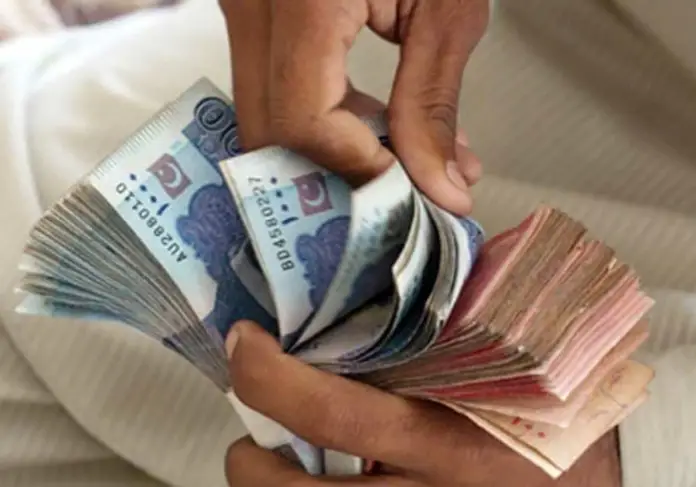The federal government’s total debt increased to nearly Rs60 trillion and was mostly caused by borrowing from domestic and international sources to close the fiscal deficit.
According to figures released on Tuesday by the State Bank of Pakistan (SBP), the government’s total debt increased by 22.11% year over year to Rs61.75 trillion in July 2023 from Rs50.57 trillion in July 2022.
When compared to Rs60.84 trillion in June 2023, the government debt increased sequentially by 1.49% month over month. The primary cause of the rising debt load is the budget deficit, which was filled by borrowing from both local and international sources.
According to figures from the central bank, the majority of the debt—at Rs39.02 trillion, representing a growth of 24.08% year over year—was domestic. This included Rs29.59 trillion in long-term debt and Rs9.29 trillion in short-term debt. The remaining Rs22.73 trillion was external debt.
The government’s long-term debt climbed by 24.44% year over year to Rs29.59 trillion at the end of July 2023, up from Rs23.78 trillion during the same period last year. Similar to the long-term debt, the short-term debt increased by 27.14% year over year to Rs7.31 trillion in July 2022.
The Pakistan Investment Bonds (PIBs), which increased by 27.40% year over year to account for Rs22.06 trillion of the long-term domestic debt. Market Treasury Bills (MTBs), which represent short-term domestic debt, totaled Rs 9.22 trillion, up 27.14% year over year.
In July 2023, borrowing through Naya Pakistan Certificates (NPCs) had increased by 26.71% YoY to Rs139 billion. According to a breakdown of the government’s external debt, long-term loans accounted for roughly Rs22.67 trillion, while short-term loans accounted for Rs65.2 billion.
In the final fiscal year of 2022–2023, the overall debt and obligations of the nation increased by 29% to Rs77.1 trillion.
The nation’s debt and liabilities, including domestic and international, came to Rs77.104 trillion at the end of the previous fiscal year, up from Rs59.772 trillion the year before.
The government borrowed significantly from domestic sources, specifically commercial banks, to compensate for its growing budget deficit as well as the burden of repaying its domestic debt.
The country borrows money to cover budget deficits, close current account gaps, increase foreign exchange reserves, and more from commercial lenders, multilateral organizations, the Paris Club, and international financial organisations.
However, the amount of foreign debt increased as a result of a sharp decrease in the value of local currency, reaching Rs32.495 trillion in FY2023. Over the previous fiscal year, the value of the rupee decreased by 41%.







